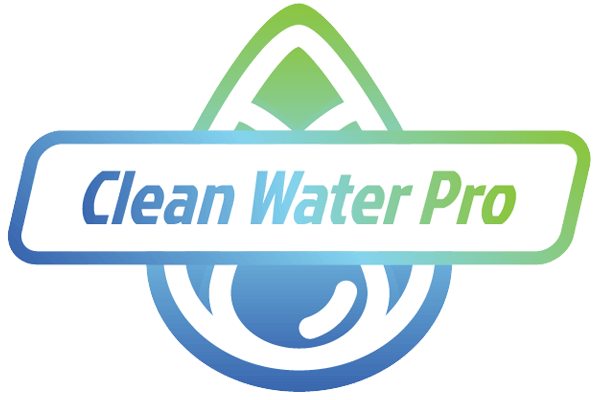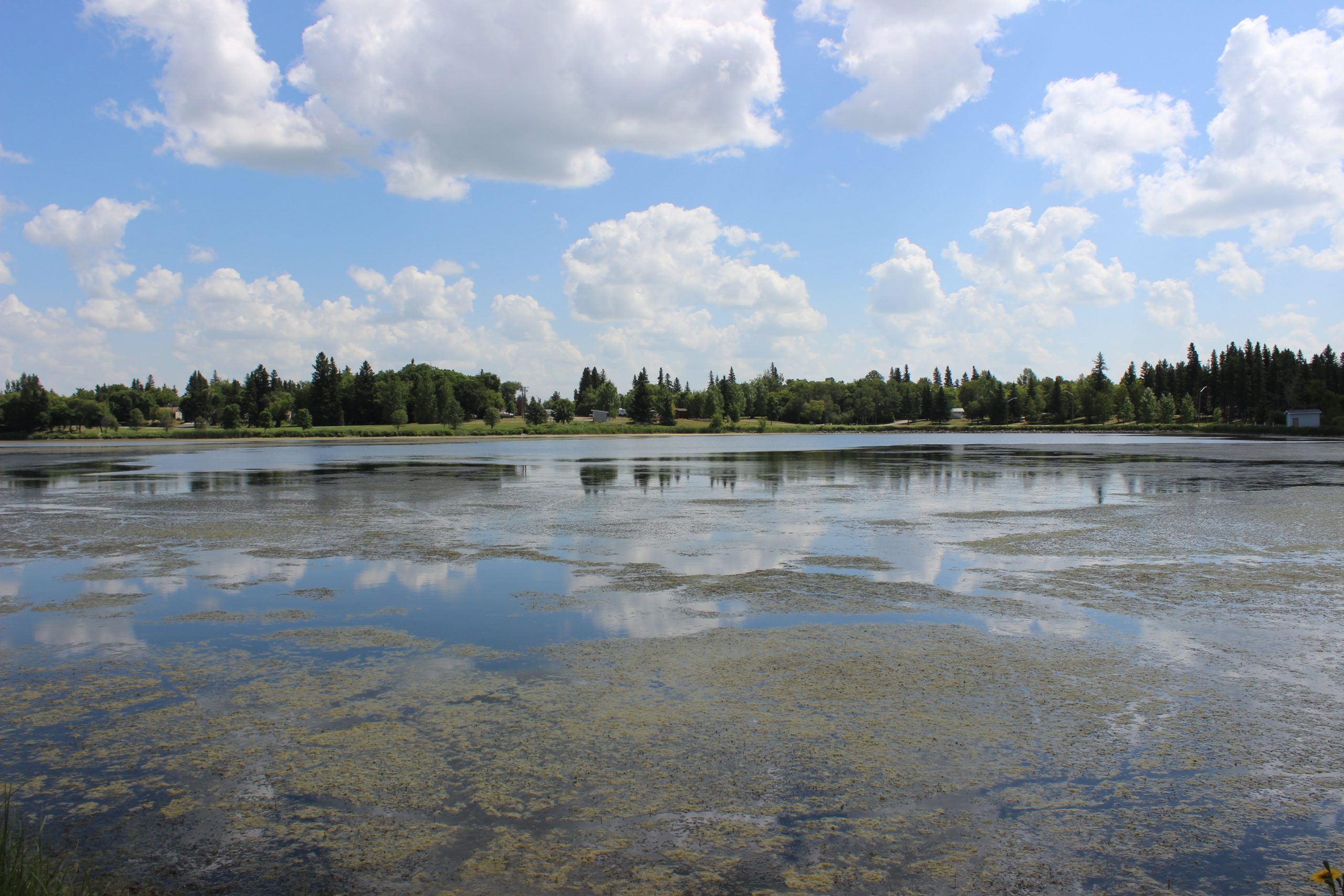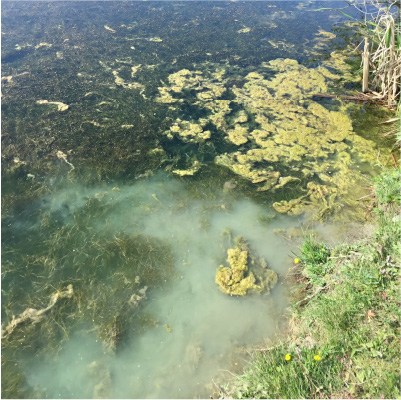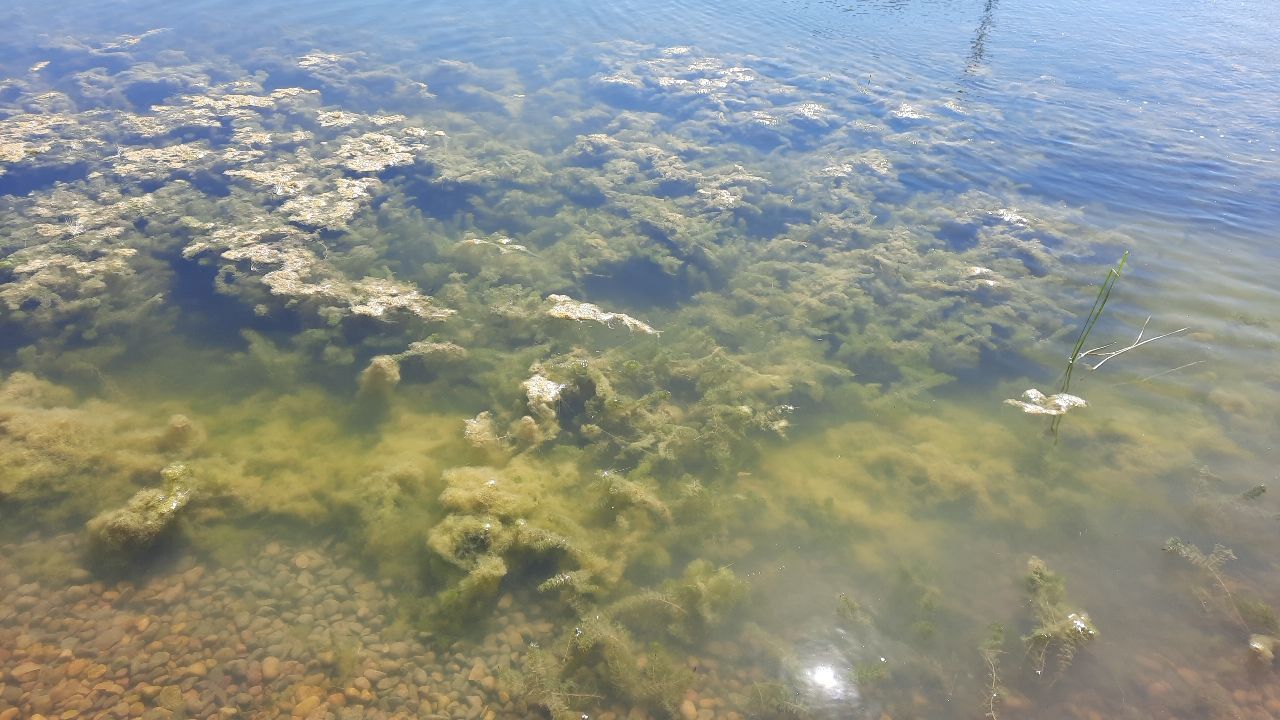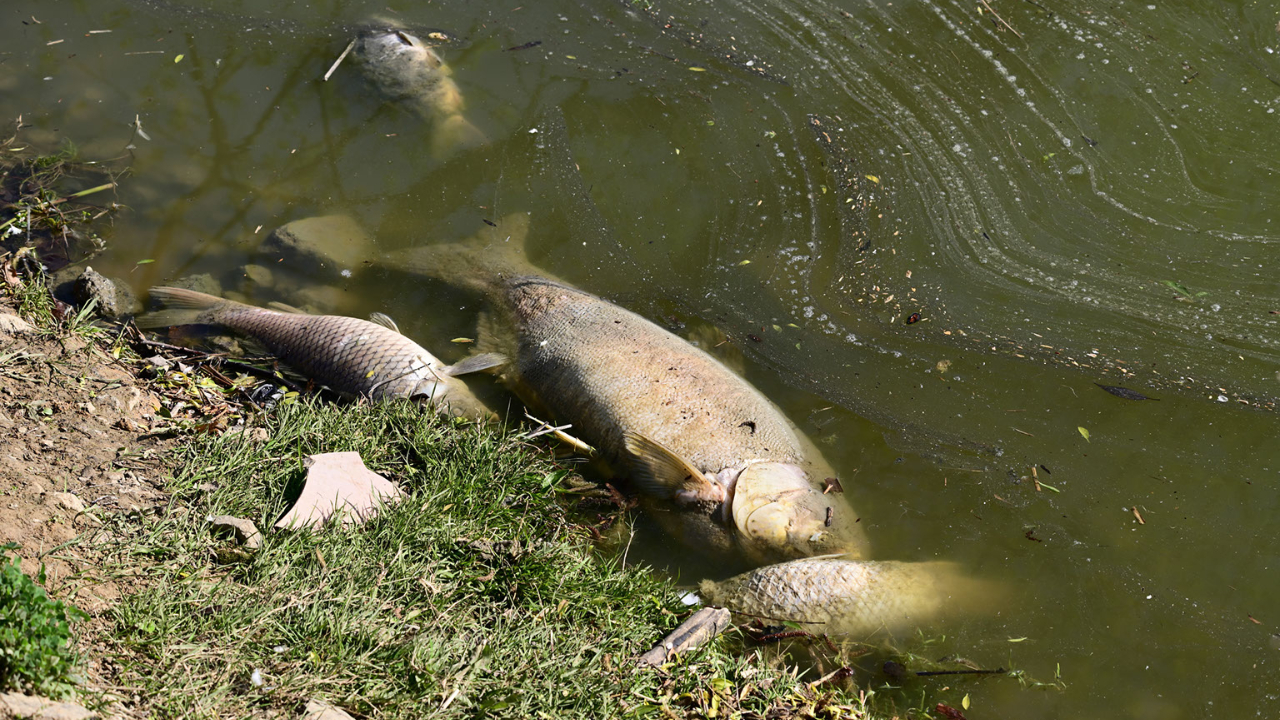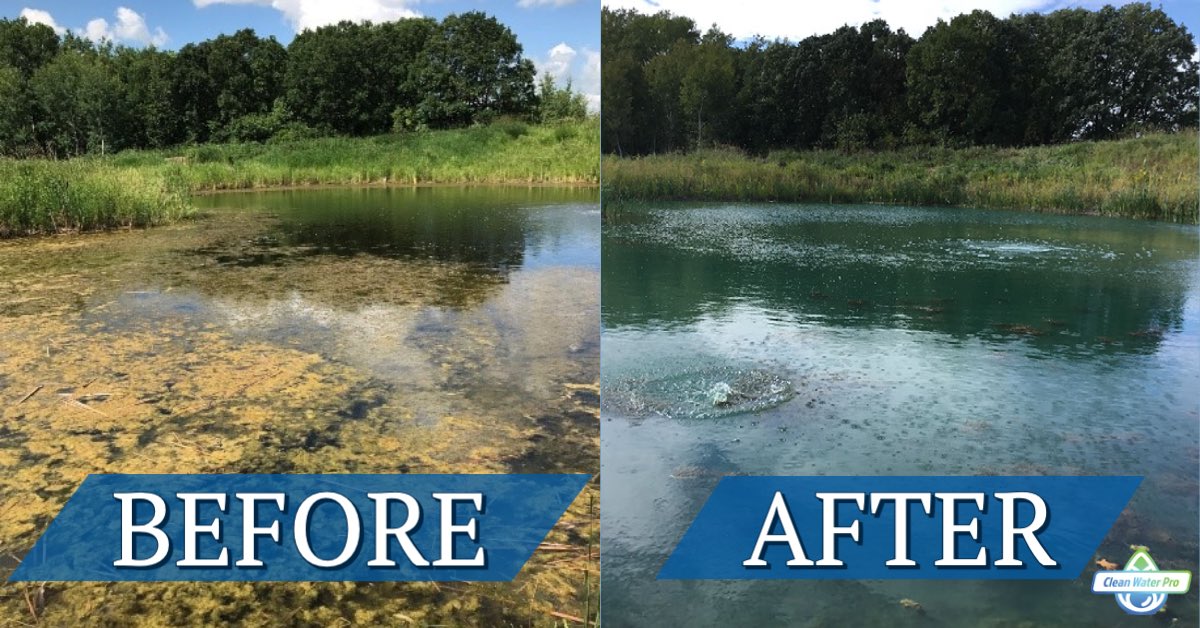How Does Stagnant Water Affect Dugout Ponds, Retention Ponds, and Lakes?
Everyone loves fresh, clean water, right?
But what if the water of your favourite lake or pond is not as it should be? Stagnant water can cause a lot of problems for us and our environment.
When we talk about stagnant water, we refer to water that has been sitting in one place for a long time without moving. When water sits still over a long period, it becomes the perfect breeding ground for harmful bacteria, odour, algal blooms, and other water quality issues.
This article will help you understand what stagnant water is, how it affects lakes and ponds, and what you can do to prevent this from happening.
What Is Stagnant Water?
Stagnant water is left to sit for a long time, often called “standing water.” No movement or water aeration allows stagnant water becomes a prime breeding ground for biofilms or a collection of bacteria or fungi.
When the water becomes stagnant, it starts losing its oxygen content. The lack of oxygen makes the water anaerobic. Anaerobic means there is no oxygen present in the water. When the water loses its oxygen, it also loses its ability to support life.
As soon as the water becomes stagnant, bacteria start growing on top of the water’s surface. These microbes can be dangerous for humans and animals because they produce toxins.
How Does Stagnant Water Affect Lakes and Ponds?
Lakes and ponds are very important for human beings. They provide us with drinking water, food, recreation, fishing, and many other things.
But when the water in these bodies becomes stagnant, it can affect our health. For example, when the water in a lake becomes stagnant, dissolved oxygen levels decrease. These low oxygen levels can lead to unnecessary fish kill, among other water quality issues, a topic our water experts are passionate about and have covered in our previous blog, “Why Dissolved Oxygen is Important for Ponds, Lakes, and Lagoons?”
Also, the water becomes polluted by toxic chemicals produced by the bacteria, making the water unsafe to drink and use for swimming or recreational uses.
Let’s take a closer look at some of the effects of stagnant water on lakes and ponds.
1. It Affects the Odour of Lakes and Ponds
If the water in a lake or pond becomes stagnant, then the smell of the water becomes odorous.
Dissolved oxygen levels in stagnant water will drop, causing the anaerobic decomposition of organic matter like dead fish and plants creating a “rotten egg” smell.
Hydrogen sulfide gas smells bad and can be poisonous. So, the odour isn’t the only issue when water bodies become stagnant.
2. It Can Cause Harmful Algae Growth and Algal Blooms
Algae grow in stagnant water. If the water in a lake or pond becomes stagnant, algae will grow in large numbers.
Some species of algae contain toxins that can harm people and animals. Also, the algae can block sunlight from reaching the bottom of the body of water. Smaller amounts of sunlight result in less photosynthesis and lower natural oxygen levels in the water. This change in water composition only causes the water quality issues to get worse.
When large algal blooms are grown in lakes and ponds, they can also harm or kill fish and other aquatic animals by depleting the dissolved oxygen reserves in the water body. This can have devastating consequences for wildlife. Learn more about the risks associated with stagnant water in retention ponds.
3. It Makes the Water Unsafe to Drink
When the water in a lake is stagnant, it contains more than just algae. There are also harmful bacteria in the water.
Bacteria in the water can make the water unsafe to drink. People who ingest the water while swimming can get sick, while pets, livestock, and wildlife can also become deathly ill. Additionally, the bacteria can contaminate the soil and groundwater around the lake.
4. It May Cause Fish Death
Most fish live in freshwater. When the water in a lake turns into stagnant water, the oxygen level in the lake drops. As a result, the fish cannot survive.
Not only do fish die, but the death of fish can cause problems for other animals in the area. For example, dying fish in a lake can trigger a chain reaction in the food web of that ecosystem.
Stagnant water will increase the likelihood of winter fish killing during colder months. In a previous blog, our water experts discussed the topic “What is Winter Fish Kill? How Can You Prevent It?”.
5. Stagnant Water is Often Correlated With Eutrophic Ponds or Lakes
Lakes and ponds change naturally over time. However, In bodies of water enriched with nutrients due to human activity, biodiversity is depressed because plankton and algae increase rapidly at the cost of other aquatic organisms. This is a sign that the stagnant water body is becoming eutrophic.
Other signs that the stagnant water body is becoming eutrophic are:
|
|
Learn more about Eutrophic Ponds and Lakes here.

How Do We Prevent Stagnant Water From Occurring?
There are several ways we can prevent stagnant water from occurring. Especially when dealing with small ponds, we must be careful about managing our treatment efforts and the runoff from the surrounding area around the pond.
For example, if you want to create a pond, you should keep it clean using a combination of pond aeration and environmentally friendly beneficial bacteria. You should avoid using fertilizers or pesticides near your pond because they contribute to runoff, which carries nutrients and pollutants into your pond.
Lastly, don’t use your pond as a garbage disposal. Adding garbage and organic waste to the pond, such as leaves, grass clippings, and compost, will only worsen the stagnant water. Additionally, don’t deposit used oil or wash paint brushes in the pond because toxins will build up and can be detrimental to aquatic life.
Can We Prevent Lakes and Ponds from Becoming Stagnant?
Yes! The best way to prevent stagnant water is to install and operate a fine-bubble water aeration system. Lake and pond aerators are the most effective way to circulate the water and increase dissolved oxygen levels.
Fine bubble systems are the most efficient in transferring dissolved oxygen to the pond. Choose a diffuser plate that gets dissolved oxygen right to the bottom of the pond where the mud water meets.
The image below shows the difference between stagnant water and water flowing because of a fine bubble pond aerator system. Beneficial bacteria were also used for this treatment plan.
Lake and pond owners or managers should use fine-bubble water aeration systems alongside beneficial bacteria treatments for optimal results. Beneficial bacteria treatments that are aerobic are environmentally friendly, easy to apply, and safe for humans and wildlife.
These all-natural water treatments promote clear water, reduce muck accumulation, and remove phosphorous. Also, every beneficial bacteria treatment ingredient is found naturally in the water and soil.
Lastly, you should take action immediately if you see any signs of pollution on the shoreline. You should remove all trash and debris from the shoreline. Additionally, you should stop dumping chemicals into the water. These chemicals can pollute the water and cause algae growth.
Avoid using copper sulphate, also known as bluestone, as it destroys the natural balance of your pond or lake. It kills all living organisms in its path and is residual in the sediments at the bottom of the water body.
The Bottom Line
Fresh water is essential for life as we know it. If we lose this freshwater, many species will suffer, which is why protecting our freshwater sources is important. By taking care of our land and waterways, we can help prevent stagnant water from forming.
We should prevent polluted water from reaching our lakes and ponds. Preventing water pollution means keeping our land clean and removing trash and debris from the shores. Improving your water quality increases biodiversity and promotes healthy ecosystems.
Not only will this help us prevent stagnant water, but it will also help us save our natural resources.
